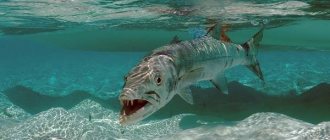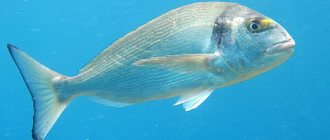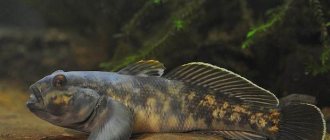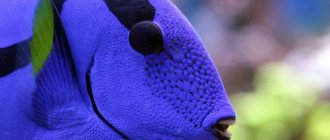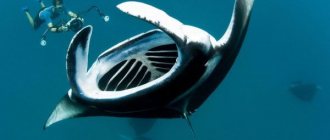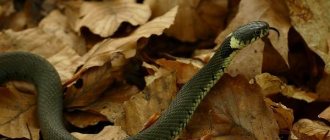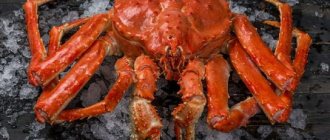Description and features
The ruffe is fish . An adult specimen usually does not exceed 10 cm. A palm-length ruff is considered large. In the Danube, fishermen come across ruffs that have reached 30 cm. But this is rare.
Head with a profile sloping from the back to the thick-lipped mouth. The mouth of the ruff is terminal, that is, both jaws are approximately equal to each other. The cut of the mouth is slightly slanted downwards or runs along the line of the body. With such a mouth, it is most convenient for the ruff to grab prey in front of it.
There are many small sharp teeth present on the upper and lower jaws. The teeth do not have a pronounced specialization, which indicates the versatility of the ruff as a predator. The upper jaw is movably connected to the skull - the ruff has a retractable mouth.
The eyes of the ruff are large and protruding. Allows you to navigate and hunt in muddy water. The iris is blue-purple tones. Placing the eyes on the sides of the head suggests monocular vision. That is, the ruff perceives the picture of the world with each eye separately.
The nostrils are located in front of the eyes at the end of the snout. This is an external attribute of the olfactory organs. Each nostril connects to a pit filled with odor-sensitive cells. The paired nature of the nostrils and olfactory pits makes it possible to distinguish not only the smell, but also the direction from which it comes.
The organ of hearing does not have external accessories - ears. They are not needed. This is due to the environment in which the fish live. The sound travels confidently in the water and penetrates the fish’s body without distortion. It is perceived by the inner ear. Ruffs' hearing is not musical, but very good.
The inner ear, in addition to auditory functions, serves as an organ for determining the equilibrium position. The inner ear sorts out questions of balance together with the lateral line. This is a unique organ, found only in fish and some amphibians, for example, tadpoles and certain species of newts.
The lateral line senses the dynamic parameters of the environment surrounding the ruff: the speed and direction of the flow, waves of low and sound frequencies penetrating the water column. Based on the information received from the lateral line, a picture of the surrounding aquatic world is formed in the fish’s brain.
The lateral line runs along the entire fish body. In the ruffe, the lateral line is quite clearly visible despite the spotted-mottled pattern of the body. The lateral line is covered with scales, under which there are pores. They connect the channel running under the skin of the fish with the environment.
Branches extend from the canal to sensitive cells - neuromasts. These cells respond to water pulsations, vibrations and other changes in water flow. From the neuromasts, in turn, a signal about the state of water through the connecting nerve line enters the ruff’s brain.
The totality of the subcutaneous canal, neuromasts, and other parts is the lateral line. This organ is so sensitive that in muddy water and at night it replaces the ruff’s vision. In addition to sensory organs, ruffes, like all fish, have organs of movement - these are fins.
Almost the entire upper part of the back is occupied by the dorsal (dorsal) fin. It is divided into two parts. The main, first part of the dorsal fin is comb-shaped and includes 13-14 spines. Their seriousness is demonstrated by the ruff in the photo. The second part of the fin is based on 9-11 soft rays.
Caudal fin with well separated lobes. The last unpaired fin is the subcaudal fin. The ventral and pectoral fins are symmetrical relative to the body. Their size indicates the ruffs’ tendency to maneuver while moving.
Fast and maneuverable swimming in ruffes is necessary for predation. The caught prey enters the mouth, where it is held by small conical teeth. Then it goes into the throat. From it into the distensible stomach. Stuffing it is the main purpose of the ruff.
The digestion process in ruffs is faster than in other fish. The intestines work more actively. Per unit mass, the ruffe eats one and a half to two times more food than its freshwater counterparts: perch. that the ruffe is a big eater.
In addition to food, the determining component of life is oxygen. The ruff extracts it from the water using gills. Water enters the gills through the mouth. It is filtered through the gill projections, the so-called stamens, and washes the leathery folds, which are called the petals. In contact with them, water releases oxygen, which enters the blood capillary vessels.
Capillaries release waste carbon dioxide into the water through the petals. The enriched blood enters the gill arteries. From them it passes into the roots of the aorta, from where it follows into the dorsal aorta. This fundamental vessel supplies blood to the head, internal organs and all muscles.
The ruff opens the gill covers. The pressure in the pharyngobranchial space decreases. Water is drawn into the gill area. The process of gas exchange occurs. When the gill covers close with excess pressure, water is thrown out.
The general color of the fish is gray with yellow-brown notes. The color of the upper back matches the general color, but is noticeably darker. The abdomen of the ruff is foggy white. Small dark spots are scattered throughout the body, including the fins. In addition to spots and spots, the cover is decorated with dark specks.
The color of the ruffe largely depends on its habitat. Transparent river waters with a sandy bottom give a steely tint with a yellow tint. Deep reservoirs with stagnant water color the ruffe in darker tones, close to the color of a swamp.
The mucus that covers the ruff is endowed with security functions. The mucus contains a toxin that makes any prickly prick very painful. But for the ruff, mucus is a blessing. It helps solve several problems:
- on occasion, slip out of the predator's mouth,
- complete with spines makes the ruffe not the best prey for predatory fish,
- protects the body from mechanical and temperature influences.
The spines are the calling card of the ruff. The spines on the dorsal fin are very sharp and long. In any danger, the ruff bristles at this weapon. In addition, the cheeks and gill covers of the fish are protected by spines.
What does it eat?
The food diet is varied, since ruffes are benthophagous by nature and feed on everything that can fit into their small mouth. Despite their small size, fish have a flexible stomach and a good digestive tract, so they are very gluttonous and their food consists of:
- worms;
- miniature clams;
- small invertebrate animals;
- insect larvae;
- eggs;
- seaweed;
- different types of plankton.
During periods of calm, brushes can go without food for a long time, and calmly survive times of hunger. Fish overwinter in shallow water, laying in rows in bottom holes. If the season is warm and they have not managed to fall into a serene state, then they begin to feel hungry and then the ruffes often fall for the bait of ice fishing enthusiasts.
Kinds
Ruffs are included in the biological classifier under the name Gymnocephalus. The ruff genus contains only 5 species. All types of ruff are similar to each other.
- Gymnocephalus cernua - Eurasian or common ruff. Inhabited most of the rivers and lakes of Europe and Siberia. It was unintentionally introduced into the United States in the St. Louis River. In the reservoirs included in the Great Lakes system, it established a powerful population.
- Gymnocephalus acerina - Don ruff. Lives and breeds in rivers and lakes of the Black Sea and Azov basins. In places where this fish is found it is called differently: nosar, beaver, privet, pig.
- Gymnocephalus ambriaelacus is a species included in the biological classifier in 2010. Endemic to one lake, which is located in Germany, in the upper Danube basin. The lake is called Ammersee.
- Gymnocephalus baloni - Danube or Czech ruff. This fish was considered endemic to the Danube. But ichthyologists note the appearance of the species in other Eastern European rivers and reservoirs.
- Gymnocephalus schraetser is a river ruffe that has colonized the water bodies of the Danube basin. The common name is striped ruff.
In addition to the fact that the ruffe is a genus representing 5 species, there are also color and anatomical differences within the species. That is, the same species of ruffe living in a shallow and deep-water lake can acquire its own morphological characteristics.
This indicates the high adaptive abilities of the fish. The conditions changed - the fish adapted to them. Since changes in the living environment are limited, the correction of morphological characteristics is noticeable, but not dramatic.
Where does it live?
Yandex pictures
The main distribution area is in Northern Asia and Europe. You can find them in the basins of the following seas:
- Caspian;
- Black;
- Northern;
- White;
- Baltic;
- Barentsevo.
Ruffes are bottom-dwelling fish that prefer to live in freshwater reservoirs and get along quite well in brackish water, the main thing is that it is clean, without harmful impurities, enriched with oxygen and minerals. This is an acceptable condition for survival, since they would rather get used to a hungry life than to a chemically polluted environment, even if it contains a lot of their favorite benthos. Fish are attracted to water bodies rich in vegetation, in which a wide variety of organic matter, microorganisms and small invertebrate animals predominate.
There are two species of ruffe in Russia - the common and the Don. They can be found more often in cool rivers and lakes:
- Siberia;
- Ural;
- Yamal;
- Taimyr.
Yandex picture
Interesting fact: Until the beginning of the 21st century, ruffe could be found even in the waters of the United States, where they arrived through artificial channels and natural branches. The reason for the disappearance was amateur fishing for large fish, where ruff was used instead of tasty bait. Artificial breeding in American reservoirs did not bring the expected success.
Lifestyle and habitat
It is difficult to imagine a body of water in central Europe where the ruffe could not get along - it is an opportunistic fish. Siberian rivers and lakes have been completely mastered by him up to the Kolyma basin. Moreover, the ruffe is not bothered by the low salinity of the water - up to 12 ‰.
The ruffe especially loves sluggish rivers and deep lakes with a soft, clayey substrate at the bottom. The coastal vegetation suits the ruffe. He favors shaded areas of the reservoir. In such places, it is easier for the ruff to use its advantage: it sees well in low light.
The biological balance in places where the ruffe lives may be disrupted. If there is no pressure on the ruffe from predatory fish, it begins to multiply quickly. Ruffs of all ages rely heavily on fish eggs in their diet. By devouring it, populations of valuable fish species can be reduced to zero.
Spawning
Ruffs prefer to continue their genus in the spring. As soon as nature begins to awaken and the water warms up to 10-15 degrees, sexually mature individuals aged 1-3 years begin the mating season. The spawning process can last for 1.5-2 months, since the most mature females are able to lay eggs more than once. When choosing places for laying, they are not particularly scrupulous, so they are satisfied with almost any substrate. The only condition is the depth, which must be at least 3 meters. Fertile females can lay up to 200 thousand millimeter eggs.
The hatched fry develop quickly, but only the strong juveniles from the first clutch survive; the rest are crushed by weak immunity. The underdeveloped eggs of young females, laid last, do not have sufficient strength and they simply have no chance of survival. The poor gene pool is explained by the fact that parents begin to reproduce at an early age, without having time to fully grow stronger. The weak generation does not receive help from their ancestors, so they often become fed. The surviving fry do not yet have protection and can only be helped by their innate ability to imitate.
It has been proven: Many fish are susceptible to sexual deformity and ruffes are no exception, but their ability to hermaphrodism is of particular interest to science. Juveniles have both eggs and sperm at the same time; Who they will be in adulthood (male or female) is up to them to decide.
Yandex pictures
Nutrition
Ruff is very gluttonous. At a young age, it collects larvae, eggs, and zooplankton from the bottom and catches them in the water column. As the ruffes grow older, they move on to larger foods. Arthropods remain an important part of the diet.
Feeding activity is the natural state of ruffs. Some decline occurs in autumn and winter. The zhor stops completely during spawning. Ruffs are especially partial to fish eggs. This circumstance has given the ruffes the status of not only a weed, but also a harmful fish.
Few predators want to eat the ruff itself. The pike attacks him in exceptional cases. Burbot, which lives in the bottom layers, constantly hunts for ruff. Pike perch does not take into account ruff spines and devours this fish all year round. The fact that the ruff readily takes pike perch has made the prickly fish one of the sought-after fishing baits. But before that, the ruff needs to be caught.
Predator or not
Spotted fish blend into the sandy, gravel or pebble bottom and become almost invisible, but this does not always save them from attentive and experienced enemies. Their small size makes them desirable prey for larger fish, but ruffs are so named for a reason, and adult individuals often scare away enemies with a comb of dorsal spines. If the threat is not successful and they manage to get caught, then there is a chance to escape, thanks to the mucus covering their small, nimble bodies.
Despite their small size, ruffes are predatory fish. This is eloquently demonstrated by obvious signs that prove that they are excellent hunters:
- A mouth armed with sharp conical and very tenacious teeth. Even despite the absence of fangs, strong jaws firmly grasp prey.
- The nimble fish has an excellent reaction, so it can attack victims with lightning speed.
- A nimble body, as if created for maneuvering and quick attacks.
- A well-developed lateral line helps to carefully survey the surroundings, not to miss unwary prey, and to keep a watchful eye on enemies.
- Excellent camouflage allows you to remain out of sight of the victims.
- Sensitive hearing organs allow you to hear everything that happens not only in the water, but also on the shore.
- A heightened sense of smell and touch that few fish can boast of. The ruff “sniffs out” the prey and tracks the prey by the slightest fluctuations in the waves, just like the pike perch.
- Patience is not a virtue in this family. Sometimes the brushes’ “nerves” can’t stand it, and they are the first to attack large enemies, but such a bold act is characteristic only of real predators, which they are.
Yandex pictures
Pisces are most active in the twilight and are not embarrassed by the darkness of the night, as they are well oriented in dark space. When the life of other representatives of the ichthyofauna subsides, small brushes become more active and begin hunting. If not for their small size, they could compete with predatory species such as:
- pike;
- burbot;
- roach;
- bream;
- zander;
- perch.
These representatives are larger, and therefore pose a danger to ruffs. They also play an evil role in reducing the population, since they eat large numbers of young fish that have not had time to acquire life-saving spines.
Fact: The most dangerous enemies of ruffs are amateur fishermen who hunt them for sport. In order to cope with the bristling “monster” and catch it without causing damage to yourself, you need to have technical skill, so small fish are a serious trophy.
Catching ruff
Ruff is caught well at any time of the year. Except for April, when it spawns. Considering the ruff's love for coolness, it is better to start fishing at dusk, in the evening. Morning attempts can also give good results.
The tackle for this unassuming fish can be the simplest one - a float rod. This proven device is quite suitable for summer and winter fishing. Perhaps in winter it is better to use a jig.
The ruff catches a worm well, especially a dented one, for which some fishermen specially press down the tip of the worm. Ruff is indelicate, he is little concerned about the roughness of the tackle. Even if he pricks himself on a hook, he will not leave.
By taking one ruffe in a quiet, shaded place, you can assume that fishing success is guaranteed. The spiny ruffe is a schooling fish. The loss of one member of the team does not frighten the remaining ruffs or force the flock to move to another place.
The caught ruffes are kept in a separate cage. This protects other fish from premature death, which can be caused by ruff injections flavored with toxic ruff mucus.
Use in cooking
The ruff is very small, bony and practically unsuitable for frying, because a small carcass without a head will simply get lost in the frying pan. Despite this, many consider it a delicacy due to the sweetish taste of the meat and it can become an excellent dietary dish if you are lucky with the catch. Fishermen with gastronomic skills prefer to use this fish in the ear, as a trifle that adds richness to a real fishing dish.
In such cases, there is no need to separate the head, just be sure to remove the gills and place the gutted carcasses in a gauze bag before putting them in the pan. After the fish is cooked and gives up its valuable qualities, it is taken out and pieces of more noble and less bony fish are added to this broth. If you cook this soup at home, you can throw in the ruffs, even with scales, only then carefully strain the broth through a colander or through a sieve.
Reproduction and lifespan
With the onset of spring, the ruffe begins to prepare for spawning. This process usually affects ruffs at the age of 2-3 years. In a particular population, due to external conditions, the lifespan of most individuals may become short-lived. In this case, one-year-old ruffes will participate in spawning.
Ruffs, like some other fish, may have hermaphroditism. That is, the same ruff has both female and male reproductive organs. This deviation is not observed in all populations and in no more than 25% of ruffes in a flock. It develops as a compensation mechanism for increased mortality of fish of either sex.
There is no clear dependence of the spawning process on water temperature, light or other conditions. In early spring, a flock of ruffs emerges from the depressions in which they overwintered. The spots on the bodies of male ruffed ruffs become brighter and more contrasting.
The flock moves to areas where the water is sufficiently rich in oxygen. The process of spawning may not be a one-time process. The female can lay clutches 2-3 times. The males accompanying the females water the eggs with milk. Spawning lasts from 3 days to 2 weeks.
The ruffe egg is small - from 0.3 to 1 mm. If she is lucky and she is fertilized, after 1-2 weeks a larva will appear, which will quickly develop into a ruff fry. Adult fish do not care about the eggs or the young that emerge from them.
During spawning, 1-2 weeks, the ruffe stops feeding. This is probably a natural mechanism to protect the eggs from their own parents. In addition, the species is protected from all predators by the mass production of offspring.
The female, depending on her size, lays from ten to several hundred thousand eggs. The survival rate of eggs, larvae, and fry is low. But ruffes that have escaped predators, fishermen and disease can live up to 10 - 12 years. This is the limit for females; males live less, up to 7 - 8 years.
Characteristics of fish
The Sea Ruff has a size of up to 20 cm and has a variety of colors, which depend on the depth of the inhabited body of water. In deeper waters, the Ruff may have a black tint; in shallow rivers or lakes, its color changes to a dull green.
When pulled out of the water, the river fish Ruff, a photo of which can be seen below, spreads its fins, exposes its spines and points its tail towards its head. Because of this, it is called prickly, since the fins are sharp, and after being pricked, the wounds do not heal for a long time.
Another distinctive feature of Ruff is the mucus that covers his body. This fact has a negative impact on other marine life. If you place “slimy” fish in the same container with other marine representatives, after 30 minutes they will float up belly up.
The camouflage color and prickly spines of the fish perfectly protect it from the predatory inhabitants of reservoirs. Pike loves ruff, but when trying to eat the prey, it fails. The pike, when hooked, releases Ruff, this saves his life.
Aacute agriculture in China began to suffer more from poachers
Price
There is no commercial fishing for the common ruffe, so it will not be possible to purchase the ruffe in the store. But ruffs have two namesakes that are caught for sale - sea ruffs and flounder ruffs. These fish are not closely related to true ruffs. But they allow you to do the impossible - buy a ruff in a store.
Flounder is not a cheap fish. It is often sold dried at a price of approximately 500-600 rubles. per kg. Sea ruff , which is more correctly called scorpionfish, is a gourmet product. The cost of frozen sea ruffe can exceed 1,500 rubles per kg.
But none of these fish will ever replace a real ruff in a dish like fish soup. There is only one thing left to do - contact the fishermen. They are the ones who can supply any cook or housewife with enough fish to prepare fish soup from ruff.
Breeding
The fish is of no industrial interest. But some amateur fishermen can create a home pond with ruffes on their property.
Not just any water is used to grow fish in a home pond. Water from sources is not suitable, because it is possible that it may be contaminated with something. For the same reason, they do not take plants and fish from nature, but purchase them in specialized stores.
Tap water, but purified and prepared, is suitable for breeding ruffs. They purchase special additives that make unsuitable water suitable for a country pond.
When filling a container with water, it is prohibited to immediately introduce fish into it. First, plants are planted and wait until the correct microclimate and silt layer are formed. Obtaining favorable conditions for ruffes can last for a month. Then the water is drained without damaging the sludge, and the container is filled with clean liquid. When it settles a little, fish are released.
Plants help saturate the pond not only with oxygen, but also with nutrients. Often the plants themselves are used as food for fish.
A real decoration of the pond (and an ecosystem for the fish) will be water lilies, water hyacinths, chickweed, chastukha, fir panicle, water chestnut, telores, marsh marigold, water mint and others. To prevent a large area from becoming overgrown with plants, special bags are produced into which gravel is placed, and then the vegetation is planted.
Growing fish in the country is a process that requires constant monitoring of the quality and composition of water, its hardness and acidity. These indicators can be improved by supplements purchased in stores. It would be a good idea to purchase an aeration device. This is especially important in winter - it will be possible to avoid mass death of fish due to lack of oxygen, as happens in natural conditions. It is important to feed ruffs with special food.
Gastronomic properties
After the necessary heat treatment, the product has a rather pleasant, sweetish taste. Ruffs are boiled, baked, fried and stewed with vegetables.
Energy value and use in cooking
Ruff meat is low-calorie (less than 100 kcal per 100 g of fillet). Fish protein is healthy, easily absorbed by the body and contains a whole range of useful vitamins and minerals. The meat is quickly fried and stewed.
Ruffs are dried by sprinkling rows of fish with coarse salt. Oppression is placed on top for several days. The product is then soaked and washed to remove excess salt. Afterwards they dry for a few more days.
Fish soup made from ruffs is considered the most delicious; rich soups are made with this fish.
